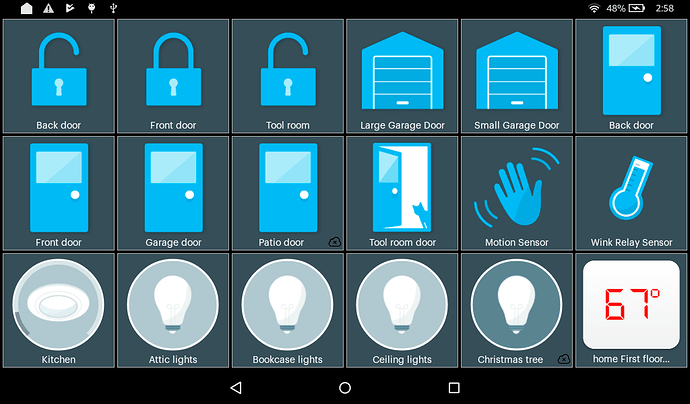Hi,
I used to work at Wink and while there wrote a dashboard view for their Android app (screenshot included). I was never able to get it released during my time there -- something I hope might happen now that they're going to start charging users..
Anyway, I'm just doing some digging into how hard it'd be to write an open source native Android app and the MakerAPI seems like what I'm looking for with 1 major exception - receiving instant updates when they happen.
I see the "URL to send device events to by POST" setting but that doesn't make sense to me.. if I've got several tablets running this app - all connected to my hubitat hub - this doesn't seem like it could work. Not to mention that an Android device generally isn't reachable directly from the hub by URL.
Is there some kind of event subscription logic -- using a keep-alive web connection that could work? Or, what about being able to receive push notifications for device changes? That's how Wink updated it's Android device.
Anyway, I was hoping not to do any polling as that seemed pretty inefficient.. and without polling frequently updates wouldn't feel very quick to respond.
Please let me know
thanks
joe
edit:
what about being able to receive push notifications for device changes?
By this I mean a silent push notification -- you don't actually see anything on the device but the app can handle the notification and update the UI

 )
)

